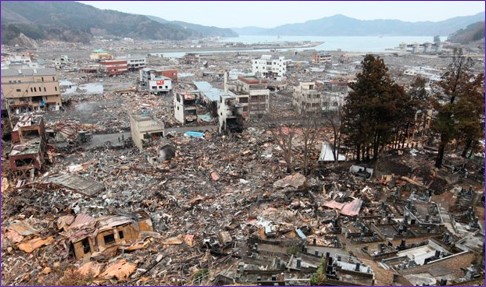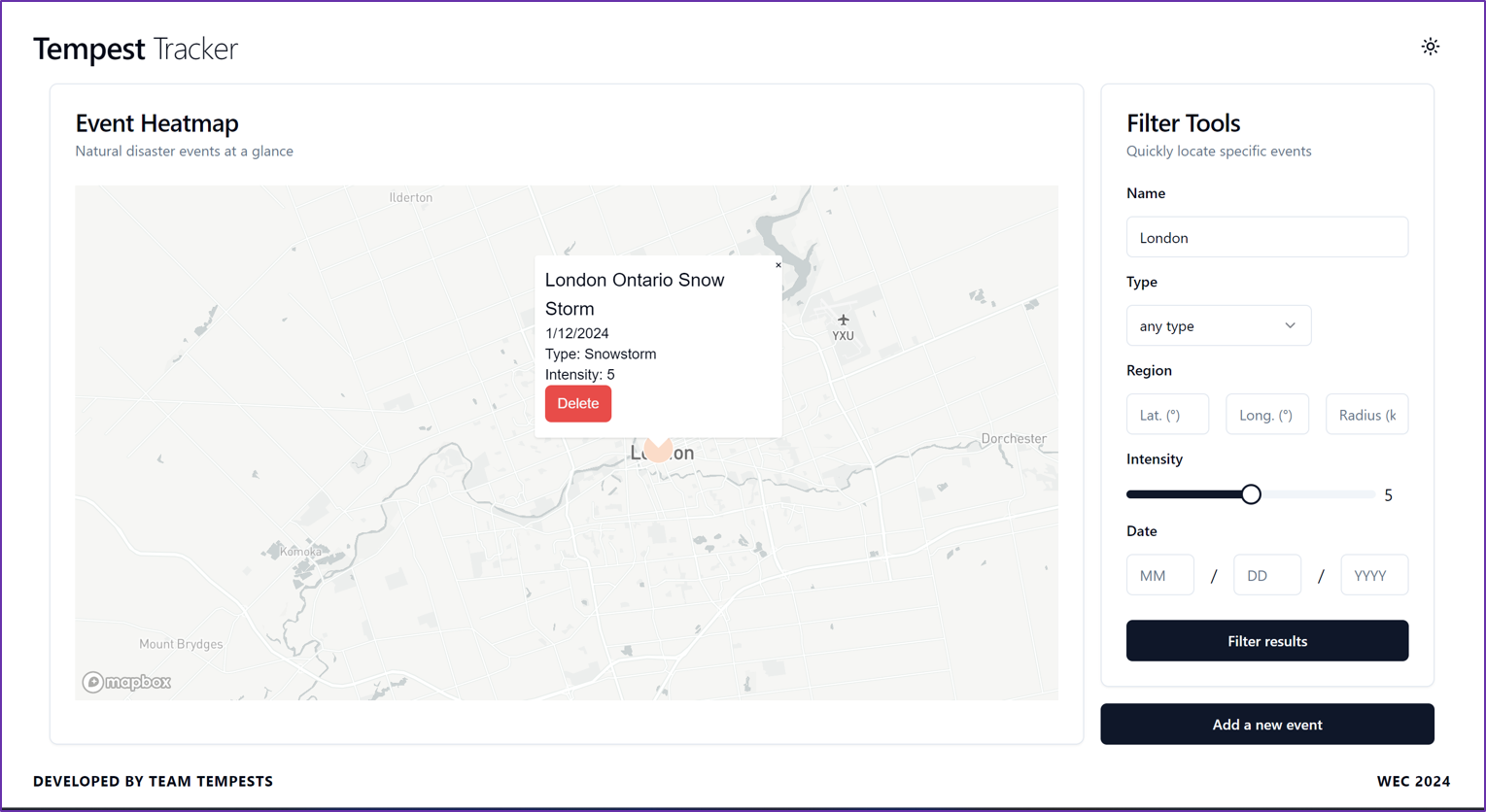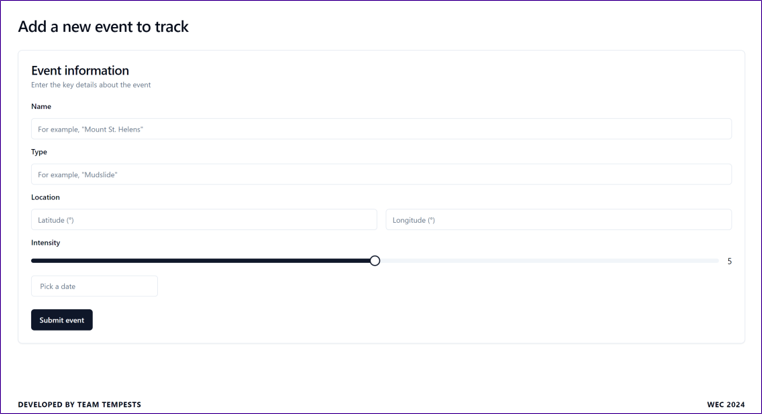Tempest Tracker

Western Engineering Competition - First Place
React.js
Remix
Prisma ORM
SQLite
TypeScript
MapBox API
shadcn-ui
Full-Stack Development
Hackathon
CONTEXT
A Global Emergency.
Every year, thousands upon millions of individuals die due to unexpected natural disasters that leave emergency systems overwhelmed and unable to offer the necessary relief efforts to those that need it most. Without the development of a robust infrastructure, many communities will continue to be ill-prepared for these life-changing and life-ending events. This sobering truth is an example of one of many cases in which software can help alleviate the pain points and bottlenecks that allow such communities to continue to be ravaged today.

PROPOSED SOLUTION
Giving the Gift of Information.
Tempest Tracker is our software-oriented approach to solving the issues presently affecting natural disaster response. As a full-stack web application, the tool is accessible to a diverse palette of individuals in a way that targets all the users that comprise the aforementioned stakeholder groups.
Two key pillars of Tempest Tracker are information gathering and giving. Information gathering is manifested as a comprehensive list of cataloged natural disasters that can be accessed by users to have important information–including but not limited to geographical location, disaster intensity, and categorization–to stay informed of the events surrounding their region. To the same end, users can actively enrich the utility of this tool as much as they benefit from it by cataloging new and/or previously undocumented events happening near them.
In this way, Tempest Tracker will augment society’s ability to act when disaster strikes.
IMPLEMENTATION OVERVIEW

Available at Your Fingertips.
At the core of Tempest Tracker is Remix, a full-stack framework that incentivises web standards. It uses PHP-like design principles, prioritizing server-side data retrieval while also using modern tools such as React. The result is a comprehensive user interface that displays key information at a glance and in a way that is visually descriptive. For instance, a large heatmap powered by the Mapbox API makes it easy to understand where the largest disaster impacts are, allowing for resources to be distributed equitably. In this regard, plotted disasters are color-coded by intensity.
To further tailor the experience to the user’s needs, a filter box is present adjacent to the map so that users can focus on only the information that is most relevant to them. Special considerations made to how the filters work are as follows:
- The selection box for event type is populated based on unique disaster categorizations that exist in the database. This eliminates the need for the user to needlessly type out a particular category and instead simply rely on the category generalizations handled by the system.
- The region filtering is radial in nature and takes three inputs: latitude, longitude, and radius. The latitude and longitude values specify a central point of the region on the map, and the radius defines the outwarding scope of the region. This makes it easy to filter by proximity to a specific location.
- The intensity slider provides a straightforward way to select a whole number value between 1 and 10, rather than simply relying on a standard numerical text input.
DISASTER REPORTING
Be Informed of the Latest Events.
The most important tool to ensure the longevity of Tempest Tracker is its ability to dynamically update the natural disasters in the network. Using a carefully curated submission form, users can report on natural disasters yet to be documented in order to spread awareness to their community.

Inputs are carefully validated to ensure accurate measurements for location and intensity, but categorizations are left open-ended to allow users to accurately convey the event. However, should a certain report be deemed falsifiable, Tempest Tracker also offers the option to remove disasters from its network. Ultimately, the customizability of our service will allow for unprecedented information propagation that will keep communities and interested parties safe from potential disasters.
FINAL THOUGHTS
Adhering to the Technological Principles.
Our team took careful considerations in adhering to the technological principles throughout the software development process. Through clear communication and balanced work distribution, we exemplified the following principles most strongly:
- Widen Approaches: Through our clear communication, we were able to discern the best tools to accelerate the development process. For one, despite our lack of experience with Remix, we took a risk to expand our horizons and it ultimately succeeded.
- Shared Action: We used a balanced work distribution that took advantage of each individual’s strengths to complete the project in a timely manner. From the project report creation, database management system, to the main frontend components and functionalities, each of us was given a clear goal early in the project lifetime which allowed us to better concentrate on our tasks.
CREATED BY DAVID TAM
LONDON, ON, CANADA